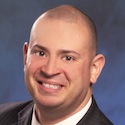12:50 PM
Tech Helps Insurers Unite Against Fraud
Insurers have long recognized the value of sharing information. In many countries, insurance claim information is pooled and used to assess risk for future underwriting purposes. Information sharing has also proven valuable for purposes of fraud detection. Fraudulent actors commonly move between lines of business and carriers to help them avoid detection. With advances in technology, more organizations can quickly set up information exchanges to stop the bad guys.
Insurers have incentives to prevent payment of fraudulent claims. Whereas fraud used to be thought of as the cost of doing business, the rate of fraud has escalated to the point where it cannot be ignored. In fact, it can have a substantial effect on profitability. As technology has improved and become more accessible, insurers find that they must automate some portion of their fraud detection efforts or else risk being a soft target in the marketplace.
Going the distance
One of the challenges many insurers face is that they can only take their fraud detection efforts so far with their own internal data. A handful of very large insurers may have enough market share in a jurisdiction to see large patterns emerge. But most carriers do not have this luxury. Often, the best way to see these patterns is to consolidate data from multiple companies and explore the industrywide patterns.
[Previously from Ruotolo: 6 Essential Skills for SIU Analysts]
Dennis Jay, executive director of the Coalition Against Insurance Fraud, says that consortia are adding tremendous value to detection efforts. “High-level collaboration ranks among the most effective tools for combatting fraud,” says Jay. These partnerships are gaining traction in the property and casualty and healthcare industries.
Partnerships flourish
In the United States, the National Insurance Crime Bureau (NICB) has long served as a clearinghouse for suspicious insurance activity. NICB analysts and investigators are constantly reviewing suspicious claims and looking for industrywide patterns of fraudulent behavior. These efforts have been amplified with the recent Aggregated Medical Database project.
“While still evolving and growing, the Aggregated Medical Database has already proven the value of sharing data in the fight against insurance fraud,” says NICB president and CEO Joe Wehrle. “Based on the provider billing data from nearly 30 of our members who represent a large percentage of the personal auto and workers comp markets, we are able to identify potentially fraudulent billing schemes and provide MedAware Alerts to all of our members.” By pooling billing data, US insurers can identify fraudulent behavior of medical providers and more rapidly respond to emerging organized fraud threats.
In Canada, multiple insurers have banded together to address fraud to create the Canadian National Insurance Crime Services organization, known as CANATICS. The stated vision of Canatics includes “providing individual insurers, and the industry, with superior intelligence derived from analytics performed on industry pooled data.” Ben Kosic, CEO of Canatics, says, “By uncovering networks of connected claim activity across insurers, we will help ensure that investigators focus their investigations on the right claims.”
Fighting fraud overseas
In Europe and Africa, individual countries may find themselves at different levels of maturity with regard to industrywide anti-fraud efforts, but all of them are able to benefit from technology.
In one case, an industry group did not have a formal fraud-fighting program but was looking to start one. It chose to focus on deploying technology that would help it institute an information sharing protocol and immediately be able to use that data with a fraud analytics framework.
In a different example, an insurance fraud bureau had been operating for years but wanted to better use the data it was collecting from insurers by deploying advanced predictive modeling and social network analytics. With the technology in place, it is able to provide more value to its member companies.
Conclusion
Information sharing is not limited to P&C. Plans are progressing to launch the data sharing program as part of the government-sponsored Healthcare Fraud Prevention Partnership in the US. Insurers can expect to see more of this type of consortium activity in the future -- and with good reason. “The combined force of multiple groups against a given fraud issue or crime ring can exert a crushing impact,” says the Coalition’s Dennis Jay. NICB’s Wehrle agrees. “This unselfishness and willingness to share information is vital to the success of our anti-fraud efforts.”
James Ruotolo is an insurance fraud technologist, thought leader and the principal for insurance fraud solutions at SAS. Connect with him on Twitter @jdruotolo. View Full Bio






















